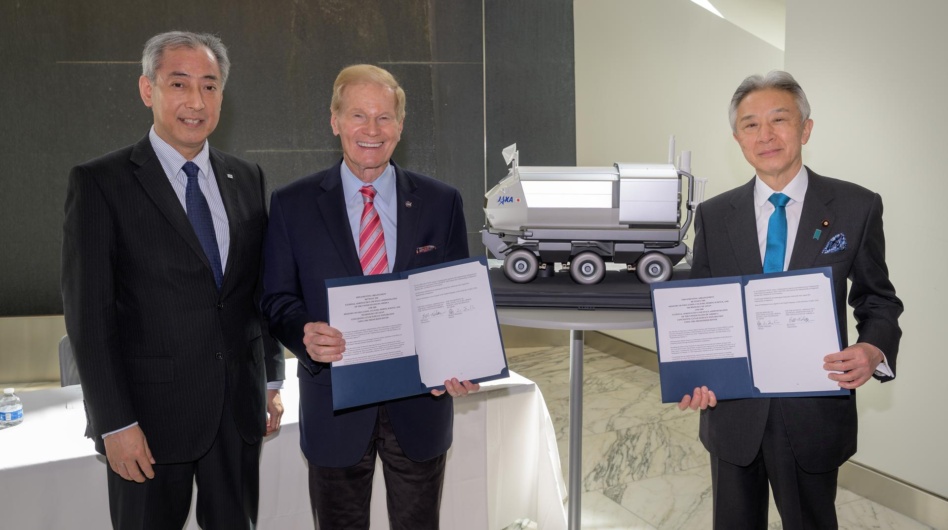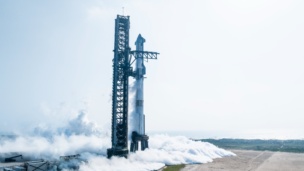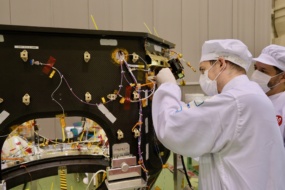Two Japanese astronauts will travel to the Moon as part of NASA’s Artemis program, potentially becoming the first non-Americans to set foot on the lunar surface.
In return, JAXA will build a pressurized lunar rover to transport astronauts on the Moon.
“We are going, and we are going with Japan,” NASA Administrator Bill Nelson said after the signing of the Lunar Surface Exploration Implementing Arrangement between the two countries during an official visit by Japanese PM Fumio Kishida to DC.
NASA expects the lander and astronauts to launch in 2031 on the Artemis VII mission, but Nelson stressed there’s a lot of ground to cover before Japan’s giant step.
Artemis Accord: International partnerships are central to the return to the Moon to win global support for novel lunar activities, secure additional resources for the program, and safeguard against waning domestic political support.
- Canada’s space agency, which is contributing a robotic arm to the future Lunar Gateway station, will send astronaut Jeremy Hansen on the Artemis II mission, expected to orbit the Moon in 2025.
- The ESA, which builds the service module for the Orion deep space capsule and components of Lunar Gateway, will send astronauts on the Artemis IV and V missions set for sometime after 2028, though those aren’t expected to visit the surface.
- Japan winning the prize to send the first non-US crew to the surface reflects the size of the country’s investment in the pressurized rover for the surface. Still, we expect there will be some chagrin today in Ottawa, Berlin, and Paris. That’s not to mention Beijing…
Rover Rover: The original Moon buggy, and the rovers being designed by US companies in partnerships NASA announced last week, require passengers to wear pressure suits while off-roading on the lunar surface. The vehicle being designed by Toyota is a fully pressurized habitat that will allow astronauts to cruise in regular clothing. It will also be teleoperable to perform tasks on the surface when astronauts are not present. NASA expects either SpaceX’s Starship or Blue Origin’s Blue Moon lander will deliver the rover to the lunar surface.



